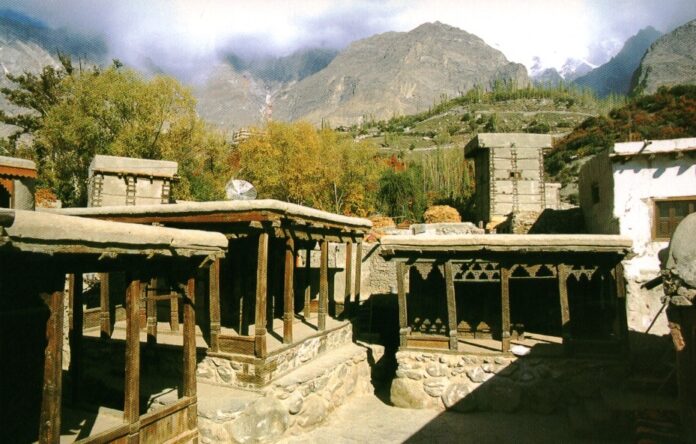The UNESCO Asia-Pacific Heritage Awards for Cultural Heritage Conservation recognize and celebrate the efforts of individuals and organizations that have successfully restored and conserved structures and buildings of heritage value in the Asia-Pacific region. Among the notable recipients is the historic settlement of Ganish in Hunza Valley, Pakistan, which has been recognized twice for its exemplary conservation projects.
Award of Excellence 2009: The Ali Gohar House Project
In 2009, the prestigious Award of Excellence was bestowed upon the conservation project of the Ali Gohar House in Ganish, Hunza Valley. This project transformed the former residence of the village lord into a vibrant center showcasing the living heritage of Ganish. Spearheaded by the Ganish Khun Heritage Care and Social Welfare Society, the project was a community-driven initiative with significant involvement from local villagers.
The restoration of Ali Gohar House has not only preserved an important historical structure but has also served as a catalyst for a growing movement favoring community-led conservation efforts in northern Pakistan. By revitalizing this historical building, the project has reinforced the cultural identity of the local population and promoted sustainable tourism in the region. The conservation work maintained the architectural integrity of the house, blending traditional materials and techniques with selective use of modern materials to ensure structural stability while preserving its historical essence.
Award of Distinction 2002: The Restoration of Ganish Mosques
Earlier, in 2002, Ganish was awarded the Award of Distinction for the successful restoration of four 300-year-old wooden mosques. These mosques, situated around the village’s central public space, known as the “jataq,” are prime examples of traditional wooden architecture and intricate ornamentation typical of the region.
Initiated and undertaken by the Aga Khan Cultural Service Pakistan (AKCS-P) with active participation from the local community, the project aimed to stabilize the mosques, which were on the brink of collapse due to years of neglect, socioeconomic changes, and natural disasters. The restrained conservation approach ensured the retention of the mosques’ rich historic patina and highlighted their intricate detailing. Traditional construction techniques were employed alongside modern materials where necessary, preserving the authenticity of the structures.
The restoration project also revitalized the “jataq,” reaffirming its role as the communal heart of Ganish. This public space, once abandoned, was restored to host public meetings, ceremonies, and festivals, thereby rebuilding community spirit and cohesion. Additionally, the project included the preservation of surrounding buildings, fortification towers, gates, and the community pond (pharee), all of which contributed to strengthening the traditional town fabric and improving residents’ quality of life.
Project Impact and Broader Significance
Both conservation projects in Ganish serve as exemplary models of community-led heritage preservation facilitated by professional guidance and external support. The Ali Gohar House and the cluster of mosques not only highlight the rich cultural and architectural heritage of Hunza Valley but also demonstrate the potential of heritage conservation in promoting sustainable development, tourism, and community empowerment.
The successful outcomes of these projects underscore the importance of involving local communities in heritage conservation efforts. They have inspired similar initiatives across northern Pakistan, contributing to a broader movement of preserving the region’s cultural legacy while adapting to contemporary challenges.
Sources:
Project profiles for 2002 UNESCO Heritage Award winners
Award of Excellence in the 2009 UNESCO Asia-Pacific Heritage Awards.

